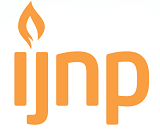An Axiomatic Approach in the Development of the Theory of Creative Aging
Abstract
Background: There are several ways in which the term ‘creativity; is defined. It may be considered an ‘act’ or an ‘expression’. At an earlier age, people do things in accordance with what is expected of them and moreover, do things from their perspective. In older adults, creativity is an innate characteristic developed to improve oneself, and on the other hand, an ‘expression’, a way of doing things in everyday life.
Objective: This study aimed to develop a substantive theory of creative aging among older adults.
Methods: The theory was developed using an axiomatic approach where six axioms were deduced into three emergent propositions. It is theorized that creativity is an innate ability of a person that does not stop upon reaching old age, and is motivated by factors that may limit or enhance creativity.
Result: The expression of creativity among older adults in the later years is dynamic and a continuous engagement in activities and life pursuits leads to a healthier and more productive state of aging.
Conclusion: Providing opportunities and an avenue where older adults can express their creativity should be considered to better understand the life of older adults and how they continue to flourish in their later years.
Keywords
Full Text:
PDFReferences
Alligood, M. R. & A. M. Tomey. (2010). Nursing Theory. 7th Ed. Singapore: Elsevier Pte Ltd.
Beal, E. (2008). Aging “creatively” benefits mind, body, spirit. Sun Newspaper. Benjamin Rose Institute.
Bradford, J. (2002). One's never too old to be creative. South Bend Tribune. Retrieved at: http://search.proquest.com/docview/417126040?accountid=141440
Carson, S. H. (2015). Creativity and The Aging Brain: Use the powers of the aging brain to enhance creativity. Psychology Today. Retrieved at: https://www.psychologytoday.com/blog/life-art/200903/creativity-and-the-aging-brain
Cheraghi, M. A., Pashaeypoor, S., Dehkordi, L.M., & Koshkesht, S. (2021). Creativity in nursing care: A concept analysis. Florence Nightingale Journal of Nursing. 29(3), 389-396 https://doi.org/10.5152/FNJN.2021.21027
Cohen, G. (2001). The Creative Age: Awakening Human Potential in the Second Half of Life. William Morrow Paperback. New York, N.Y.: Quill.
Cohen, G. (2006). Research on creativity and aging: The positive impact of the arts on health and illness. Generations, 30(1), 7-15. Retrieved at: http://search.proquest.com/docview/212209639?accountid=141440
Creswell, J. W. & Clark, V. L. (2007). Designing and conducting mixed methods research. Thousand Oaks, CA: Sage Publications.
Fitzgerald, M. (2022). Why creativity is just as important as literacy. Tinkgergarten. Retrieved at: https://tinkergarten.com/blog/why-creativity-is-just-as-important-as-literacy
Flood, M. & Phillips, K. D. (2007). Creativity in older adults: A plethora of possibilities. Issues in Mental Health Nursing. 28(4), 389-411. DOI: https://doi.org/10.1080/016128407012529
Fraser, K., O’Rourke, H., Wiens, H., Lai, J., Howell, C. & Brett-MacLean, P. (2015). A scoping review of research on the arts, aging, and quality of life. The Gerontologist. 55(4), 719-729. DOI:10.1093/geront/gnv027
Frugé, C. F. (2012). Creativity and Aging. Forest Institute of Professioanl Psychology.
Goldman, C. (2009). Who am I…now that I’m not who I was? Conversations with women in mid-life and the years beyond. Minneapolis, MN: Nodin Press.
Gowans, A. (2006). THE THIRD AGE; creative outlets can help boomers age gracefully. Columbia Daily Tribune Retrieved at: http://search.proquest.com/docview/378969834?accountid=141440
Gustafson, T. (2014). Why Creative People Age Better. The Hufftington Post. Retrieved at: http://www.huffingtonpost.ca/timi-gustafson/creative-people-aging_b_5622062.html
Hull, V. (2007). Expert: Aging enhances creativity. Sarasota Herald Tribune. Retrieved at: http://search.proquest.com/docview/270804113?accountid=141440
Isfahani, S. S., Hosseini, M.A., Khoshknab, M.F., Peyrovi, H. & Khanke. H.R. (2015). Iranian Red Crescent Medical Journal. 17(2): e20895. https://doi.org/10.5812/ircmj.20895
Jenson, J. (2002). Is art good for us: Beliefs about high culture on American life. Lanham, MD: Rowman & Littlefield
Meier, J. D. (2022). How to be creative at any age? JD Meier: High Performance and Innovation Coach. Retrieved at: https://jdmeier.com/how-to-be-creative-at-any-age/
McQuillan, S. (2019). At what age does creativity peak? Psychology Today. Retrieved at: https://www.psychology today.com/us/blog/cravings/201911/what-age-does-creativity-peak
Padua, R. (2012). Teaching theory development. Training Presentation from Cebu Normal University
Reed, I. C. (2005). Creativity: Self-perceptions over time. International Journal of Aging and Human Development, 60(1), 1-18 https://doi.org/10.2190/WM5Y-FHEM-CXQT-UEXW
Sternberg, R.J. (2011). The theory of successful intelligence. In R.J. Sternberg & S.B. Kaufman (Eds.). The Cambridge handbook of intelligence. (pp. 504 – 627). Cambridge University Press. https://doi.org/10.1017/CBO9780511977244.026
Streubert, H. J & Carpenter, D. R. (2011). Qualitative research in nursing: Advancing the humanistic imperative. 5th ed. Philadephia, PA: Lippincott William and Wilkins
Vaartio-Rajalin, H., Santamaki-Fischer, R., Jokisal, P. & Fagerstrom, L. (2021). Art making and expressive art therapy in adult health and nursing care: A scoping review. 8(1), 102-119. https://doi.org/10.1016/j.ijnss.2020.09.011
DOI: https://doi.org/10.18196/ijnp.v6i1.13351
Refbacks
- There are currently no refbacks.

This work is licensed under a Creative Commons Attribution 4.0 International License.
IJNP (Indonesian Journal of Nursing Practices) are indexed by:
Office:
School of Nursing, Faculty of Medicine and Health Science, Universitas Muhammadiyah YogyakartaSiti Walidah Building F3, 4th floor.
JL. Brawijaya, Tamantirto, Kasihan, Bantul, Yogyakarta 55183
Email: IJNP@umy.ac.id
Web: http://journal.umy.ac.id/index.php/ijnp

Indonesian Journal of Nursing Practice is licensed under an Attribution 4.0 International (CC BY 4.0) license.



















.png)
